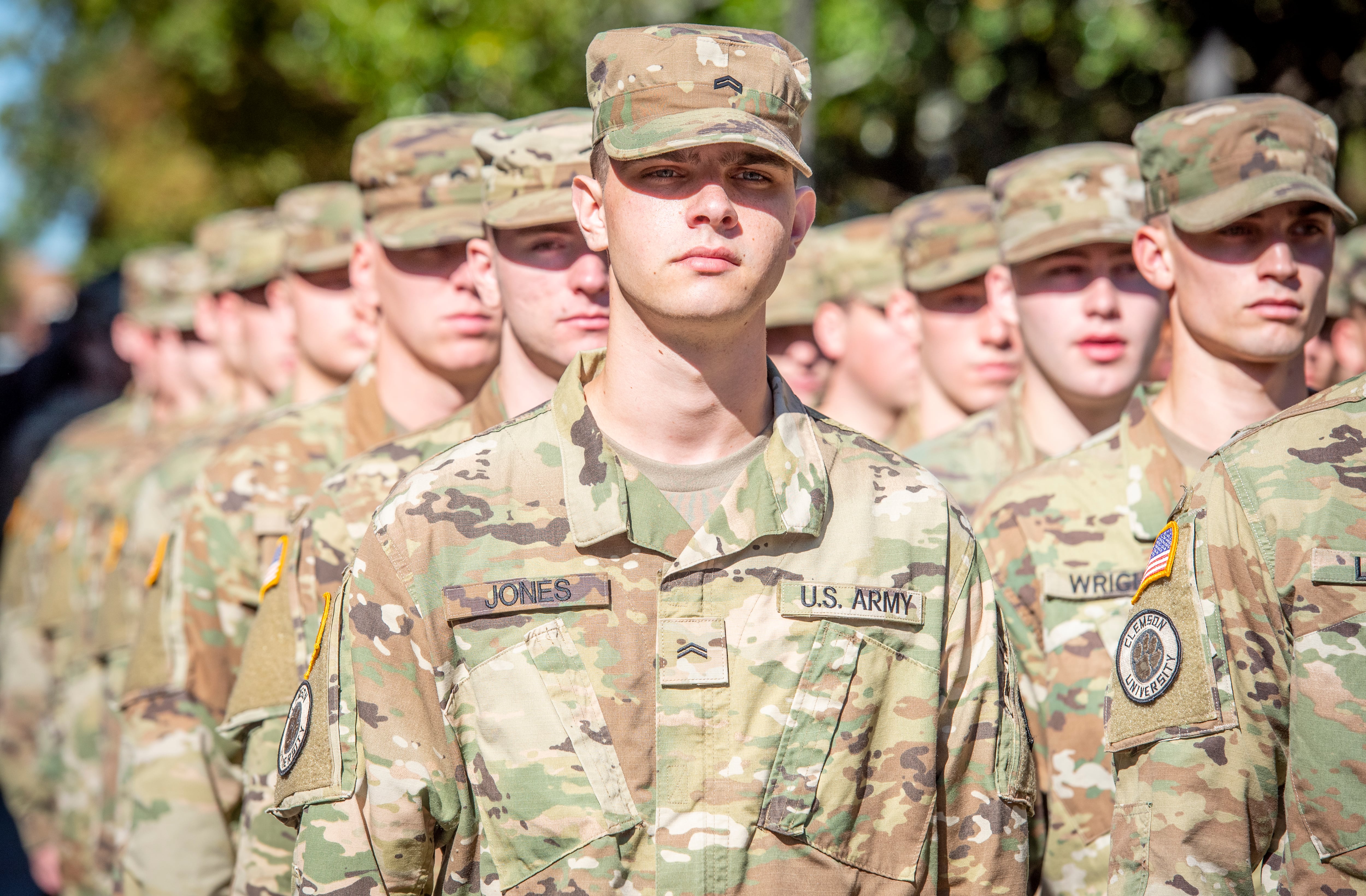Former participants in a popular Army education program worry they may be forced to delay their retirement plans and repay thousands of dollars in wages after the recent discovery of a long-running statutory oversight.
For years, soldiers in the Green to Gold Active Duty Option (G2GADO) program have counted their time in school as “time in service” — the months and years spent in uniform that, over time, yield increasingly lucrative pay raises and retirement benefits. Earlier this month, to the shock of program alumni interviewed by Army Times, the U.S. Army Cadet Command’s inspector general published guidance noting that federal law “strictly prohibits” members of G2GADO and other ROTC initiatives from counting the years they spent as cadets towards their official time in service.
The prohibition, if applied retroactively, could require soldiers to spend at least two more years in the Army if they hope to meet important service milestones, upending post-military personal and professional plans. An additional year of active service can also yield promotions and pay bumps. G2GADO graduates who received service wages while participating in the program fret that the Army may claw back thousands of dollars in potentially misappropriated funds.
The inspector general notice claimed the Army’s Integrated Personnel and Pay System, a streamlined human resources network debuted last fall, uncovered the improper time in service calculations. The error’s discovery, and its potential fallout for soldiers, is the latest instance of new military personnel management programs exposing years-old HR errors — and leaving rank-and-file to deal with the consequences.
The Green to Gold program grants enlisted soldiers the opportunity to complete two years of university schooling and, upon receiving their degree, commission as an officer. Whereas some Green to Gold scholarship programs require participants to pause their service while in school, the active duty option allows soldiers to maintain active duty status and receive commensurate pay and allowances.
The Army authorized G2GADO in June 2004, according to an internal Department of the Army memo shared with Army Times. The program accepted up to 200 soldiers annually for the first four years of its existence before upping the cap to 400, according to a separate memo dated by officials to 2008. The latter memo directed the Army Human Resources Command, in coordination with USACC, to notify candidates “that for the purpose of computing length of service for any purpose, an officer appointed under this section may not be credited with enlisted service for the period covered by his advanced training.”
Roughly 2,100 soldiers participated in G2GADO between 2014 and 2023, according to Maj. Dan Lessard, the lead spokesperson for U.S. Army Cadet Command.
In recent weeks, soldiers have vented their frustrations in popular Reddit channels and G2GADO alumni Facebook groups with thousands of members. Army Times spoke directly with three past G2GADO participants about their experiences and concerns.
The graduates told Army Times they’d applied for the program with the understanding that their time in school — during which they’d often juggle classroom and active duty responsibilities — would count as time in service. No higher-up told them otherwise before, during, or after the program, they said. Indeed, those who reached the time-in-service milestones while in the program said they received their scheduled pay raises.
“Myself, and all of the ADOs that I’m friends with and I’ve talked to — all of them were told the same thing: that nothing would change if we were Green to Gold ADO,” 2nd Lt. Reuben Peck, an Army cyber officer who used G2GADO to complete his master’s degree, told Army Times. “Nothing would change. The retirement benefits, pension, medical pay — none of that would change while they were in the program.”
Peck enlisted as an infantryman in 2014. As things stand, he’s in his ninth year of service, about halfway to the 20-year mark, when soldiers can separate and reap the full crop of retirement benefits.
“I personally really enjoy the military,” he said. “[But] am I willing to commit an extra two years in order to get the retirement that I want?”
The possibility of being forced to tough out another two years of Army life to secure post-service financial stability is especially grating for soldiers closer to the two-decade mark.
One ADO participant who deployed twice to Afghanistan over his 15 years of service — who spoke to Army Times under the condition of anonymity because he was not cleared to speak to the press — has already plotted the next steps in post-military life with his wife and two kids. Another two years in uniform could derail those plans.
“My wife and I’s plan was for me to hit my 20 years — which would technically be in five to six years — for me to retire, and for her to go get a working job,” he told Army Times. “Now I’m gonna have to go to her potentially and be like, ‘hey, that career that you want, now is gonna have to be put off for a couple more years.’”
“And that’s less time that I get to raise my kid, you know?” he added. “It makes me lose a lot of faith in the people running the show.”
None of the soldiers interviewed by Army Times had received any official notice about how the Army plans to proceed as of the evening of Sept. 29. Peck said he spoke with a member of the USACC’s inspector general office on Sept. 27.
According to Peck, the official said that barring a congressional rewrite of the regulation, the Army would most likely push back ADO participant retirement dates and take back time in service pay distributed to soldiers during their time in the program.
“Cadet Command is currently updating all instructions and applications for the G2GADO program so that soldiers applying to the program for the Fall Semester of Academic Year (AY) 24-25 are made aware prior to entering,” Lessard wrote to Army Times. “We are also ensuring that all current G2GADO program cadets are advised of the statute.”
In April, the Army updated its regulations governing ROTC programs to require that any prospective G2GADO participant be informed that federal law “does not allow any of their accrued service as a cadet participant in ROTC to count towards Regular Army retirement eligibility or benefits and/or Reserve Component retirement eligibility points,” Lessard added. Lessard also stressed that USACC “has no input to or oversight of the calculation for retirement benefits.”
The fate of the thousands of G2GADO alumni remains unclear.
Jaime Moore-Carrillo is an editorial fellow for Military Times and Defense News. A Boston native, Jaime graduated with degrees in international affairs, history, and Arabic from Georgetown University, where he served as a senior editor for the school's student-run paper, The Hoya.




